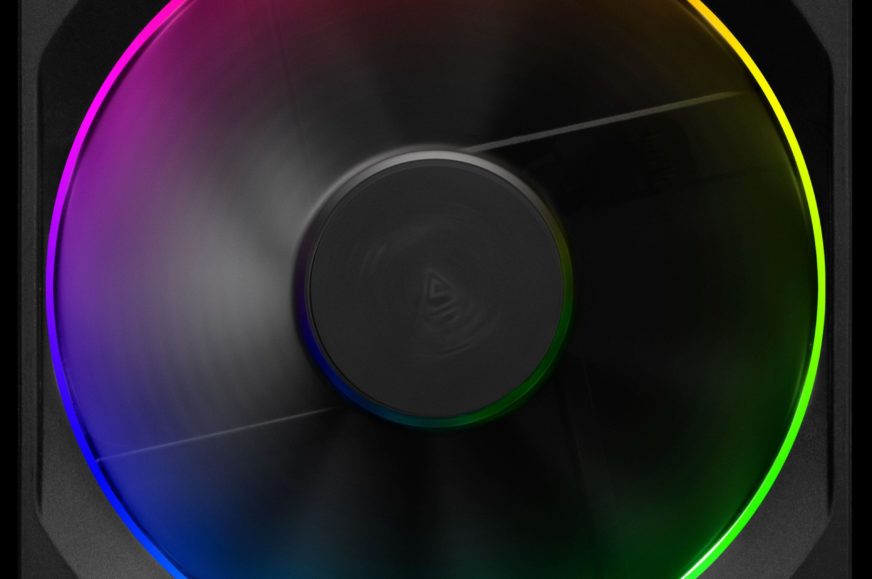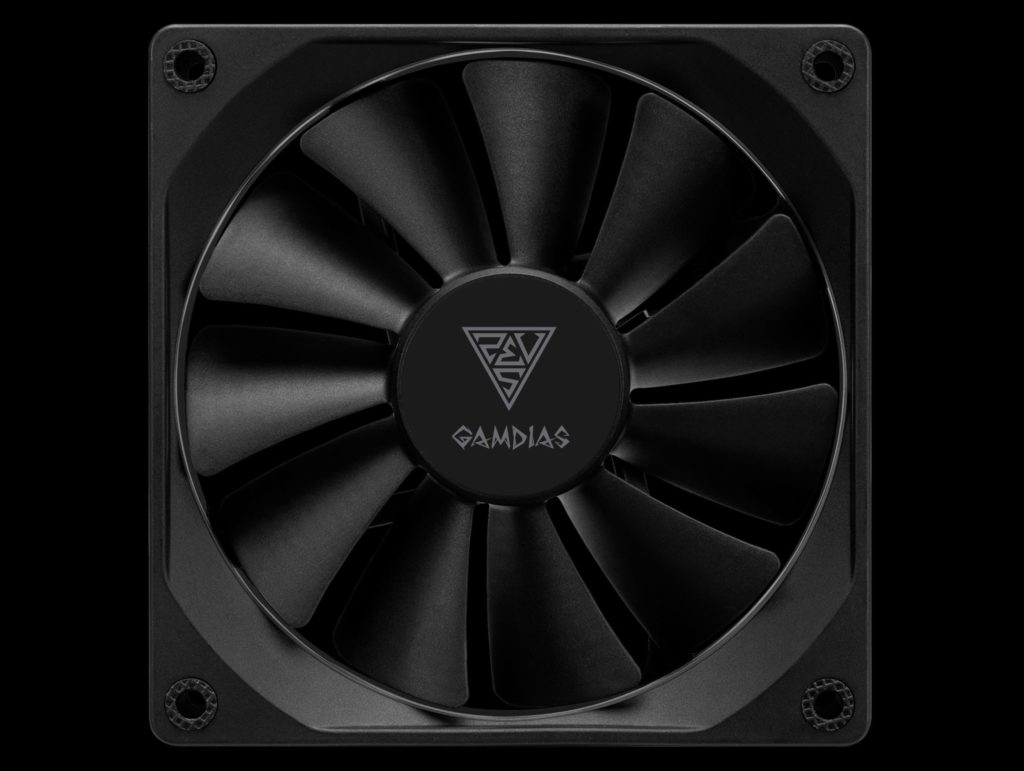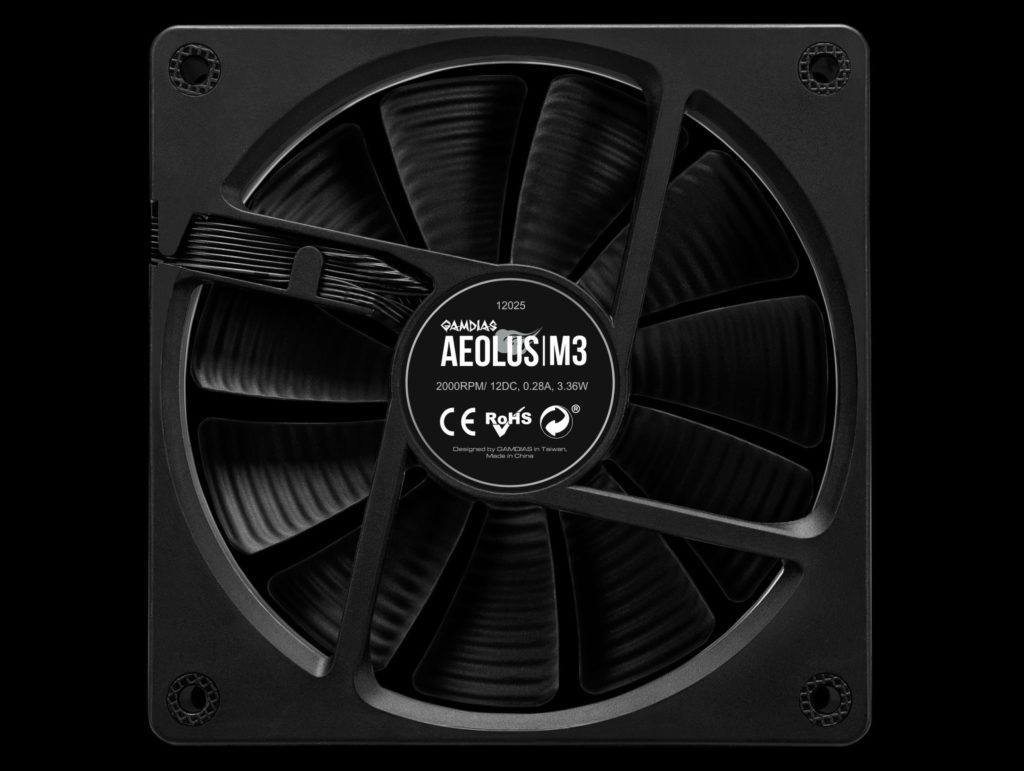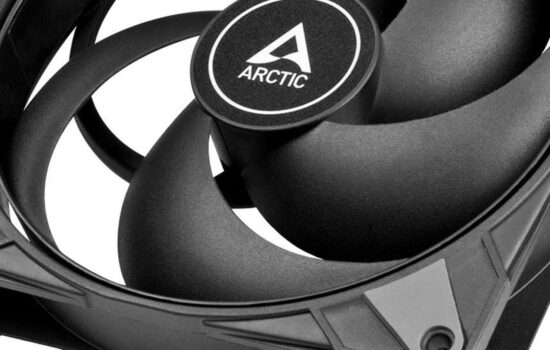Gamdias Aeolus M3 PWM ARGB
Although Gamdias is not one of the brands that are characterized by fans, it has a few of them to its name. However, there are some changes from one generation to the next, with which it obviously wants to achieve higher efficiency, higher airflow at the same noise level. It is therefore commendable that, in addition to the aesthetic additions, the development of the Aoelus M3 ARGB fan has placed particular emphasis on aerodynamic properties.
The Aeolus M3 PWM ARGB is the third fan in the M series (and for Gamdias overall) that still sticks to the most widely used 120mm format and ARGB lighting. This is fairly typical for brands that have expanded their scope to include fans in the recent past, while also having cases in the lineup.
The important thing from a design point of view is of course that they fit well into those glass mask cases (i.e. they must be distinctive, they must be visible, they must be lit). You know well from our articles that we put the emphasis mainly on the key features of the components, but as long as these are of a high standard, we can appreciate ARGB LEDs as a positive added value. We are less tolerant when there is significantly more focus on effects and efficiency plays second fiddle. However, this is clearly not Gamdias’ thinking; the Aolus M3’s efforts to increase aerodynamic efficiency cannot be denied, and we have no doubt at all that the fan has progressed in this direction compared to its predecessors, and is even more versatile in this respect. What is a simple way to tell? For example, the outer shape of the frame.
While the older Aolus M1 and M2 fans have a circular frame geometry with protruding corners and the shape is thus a kind of starfish, the M3 has a square outer contour. This means that even after installation on the radiator, the fan frame corresponds exactly to the radiator frame and is flush with it over the entire surface. In the case of the older designs, there were air gaps on the radiators, through which air escaped and static pressure dropped in the cooling system (when we consider the fan + radiator as such). Similarly, with the use of standard corners (instead of “radiator” corners), it decreases with the Silent Wings Pro 4 fans, which we have tested in detail. Compared to most common square frames, this one on the Aeolus M3 is different in that it the same height all over. Most fans have anti-vibration pads in the corners which, to serve their purpose, are typically a little taller (than the solid part of the frame), and this also creates a gap around the perimeter for some air leakage. Small, practically to the point of being negligible, but there it is nonetheless, unless it’s a design like the one on, for example, this new Aeolus M3.
The advantage of the solution described above is clear, but with better contact comes one rather large negative – and that is more efficient vibration transmission. Gamdias does have some rubber pads around the mounting holes, but there is little material used for them and they are more symbolic than something that should reduce the vibration transfer to the frame significantly. As long as there’s nothing to reduce, though, it’s fine, of course. And based on the relatively short blades, it’s possible that there won’t be intense vibrations on them even if they’re made of less rigid material, which is to be expected. Exactly what material is used to make the rotor, however, the specifications do not reveal. Still, its thickness is likely to be small, at least in the critical (thinnest) areas. This can be judged from the fact that the photos reveal a peek at a “grooved” surface texture on the back of the rotor. A similar structure as the one typical for BeQuiet! fans.
Interestingly, however, there is only one side on this Gamdias while the rotors of the BeQuiet! are grooved on both sides. For what reason could such a modification even be useful? With the help of centrifugal force, it increases the friction of the currents on the blade surface, which does not slide as much to the blade tips as they do on smooth (and especially shiny) surfaces. This also contributes to the aerodynamic efficiency of the fan. Naturally, the same function is also fulfilled by such indentations on the front side, where they are perhaps even more useful due to the fact that they are involved in the partial laminarisation of the whirly currents at the fan intake, which directly determines airflow and therefore the amount of air that flows through the fan cross-section. There is expected to be 114.7 m3/hr of it under optimal conditions. For comparison, that’s more than the Noctua NF-A12x25 PWM. However, this figure is attributable to operation in a no-obstacle environment, at an obstacle (e.g. through a dust filter) the airflow of the Aolus M3 will probably be lower, as the parameters indicate a lower static pressure, “only” 2.03 mm H2O. Its height is not only based on the resting shape of the fan, but also on the level of strength of the material from which the rotor is made.
For completeness, it is worth mentioning the speed range (800–2000 rpm) of the Gamdias fan, the presence of hydraulic bearings, and one more thing. Namely, that within the ring lightguide are contained 12 LEDs connecting to the 3-pin ARGB connector (with 5 V). Or, in the case of the three-pack (with the additional designation 1204R), there is a single, shared 8-pin connector to power the LEDs and the motor. This is something to reckon with, in case you would like to save on the price per piece with a larger package and also connect the fans to the motherboard. In this case, you need to use the included hub for power supply and regulation. And it also comes with an IR remote to not only change the lighting and its effects, but also to control the speed.
Availability and price are unknown as of yet. However, unless it becomes significantly more expensive, we can conclude based on the previous model (M3) that the fan will retail for around 25 EUR.
English translation and edit by Jozef Dudáš
- Contents
- Gamdias Aeolus M3 PWM ARGB













